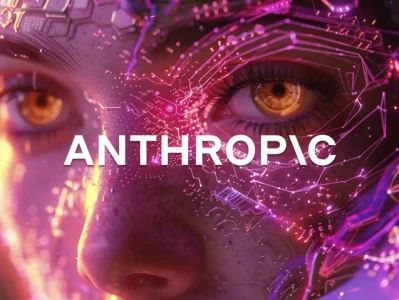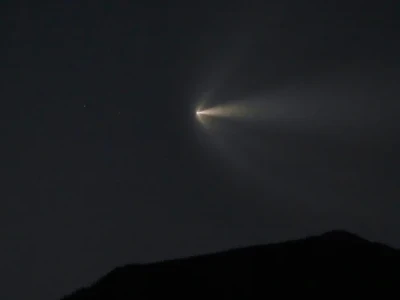The Beautiful Paradox of 'Orderly': How a Crypto Upstart is Unleashing Financial Chaos
We have a strange relationship with the word “orderly.” We crave it. We want orderly transitions of power, orderly queues, and orderly scientific principles that explain the universe. We’re told that progress itself should be orderly—a neat, predictable march from one breakthrough to the next. In recent years, we’ve even seen public discourse fixate on what makes a protest “proper” or “orderly,” as if justice can only be achieved by asking nicely and waiting your turn.
But history tells a very different story. Real, seismic change is almost never orderly. It’s messy, disruptive, and often chaotic. It’s the printing press upending the church’s monopoly on information. It’s the internet tearing down the walled gardens of traditional media. These weren't tidy, permitted advancements; they were explosions of possibility that created a new, more complex order out of a period of beautiful, creative anarchy.
Which brings me to the fascinating paradox of a project called Orderly Network. On the surface, its name suggests stability and control. And in a way, that’s true—it’s a piece of brilliantly engineered financial infrastructure. Yet, when you look closer, what Orderly is actually building is one of the most potent engines for permissionless, bottom-up, and gloriously disorderly innovation I’ve seen in years. Its recent 42% price surge after listing on Upbit isn’t just a blip on the crypto charts; it’s a signal that the world is starting to wake up to the beautiful chaos it’s about to unleash.
The Engine Under the Hood
So what exactly is Orderly? Let’s get the technical description out of the way first. It operates as a B2B orderbook-based trading infrastructure—in simpler terms, it’s like an engine manufacturer for the decentralized financial world. It doesn't build the cars; it provides the high-performance engines that anyone can use to build their own. It’s a shared liquidity layer that powers a whole ecosystem of decentralized exchanges (DEXs) from behind the scenes.
And the engine is humming. The numbers from the first three quarters of 2025, detailed in the CoinGecko Orderly Report, are staggering. We’re talking about a cumulative trading volume of over $37 billion processed this year alone. Total Value Locked—the amount of capital entrusted to the network—has ballooned by nearly 170% since January, from $19 million to over $51 million. This isn’t just a theoretical project; it’s a living, breathing financial ecosystem that is growing at an exponential rate.
But the metric that truly stopped me in my tracks was the launch of their new product, OrderlyOne. It’s being called the world’s first no-code launchpad for perpetuals DEXs. When I first saw the data on OrderlyOne powering over 1000+ new DEXs since its launch, I honestly just sat back in my chair, speechless. This isn't incremental improvement; it's a phase change. We are witnessing the commodification of the financial market. We are watching the tools of creation being handed to the masses.
This is the kind of breakthrough that reminds me why I got into this field in the first place. It’s not about the token price or the daily active users, as impressive as they are. It’s about witnessing a fundamental shift in what’s possible.

From Order to Anarchy (and Back Again)
To truly grasp the significance of this, we need to step outside of finance for a moment. Think about the activists who argue that demanding an “orderly” protest is a way for systems of power to contain dissent—a viewpoint detailed in pieces like Opinion: Protest does not need to be ‘orderly’ – it actually should not be. As one organizer, Leah Nelson, put it, “It’s hard to be polite and orderly in a system that you feel doesn’t respect you.” The same principle applies to technology. Gatekeepers—whether in media, science, or finance—have always demanded that innovation happen within their rules, on their terms. They want it permitted, polite, and, above all, non-threatening to the existing structure.
OrderlyOne is the technological equivalent of refusing to ask for a permit.
This is the WordPress moment for decentralized finance. Before WordPress, you needed to be a skilled coder to build a professional website. It was a high-barrier, exclusive craft. Then, suddenly, a platform emerged that allowed anyone with an idea and a few clicks to publish their voice to the entire world. The result was an explosion of creativity—blogs, online stores, communities, and entire digital economies that the old guard of media could never have imagined. It was messy, and not all of it was good, but it was undeniably a more democratic and vibrant information landscape.
OrderlyOne does the same for complex financial markets. Imagine what this means—a memecoin community, a DAO focused on green energy, a collective of digital artists, or a global guild of gamers can spin up their own sophisticated trading venue in minutes, creating niche markets for assets we can't even dream of today and that's a level of creative freedom that completely bypasses the old gatekeepers of Wall Street and venture capital.
This raises some profound questions, doesn't it? What happens when a financial market is no longer a walled garden built by billionaires, but a public park where anyone can set up a stall? What new forms of value exchange will emerge when the friction to create them drops to practically zero?
Of course, this immense power comes with immense responsibility. A world with thousands of niche, fragmented markets could introduce new risks. Bad actors will undoubtedly try to exploit these tools. This isn't a utopian fantasy. But the solution isn't to fear the technology and lock it away. The solution is to build the educational tools, the safety nets, and the community-driven guardrails right alongside it. We must embrace the chaos while building the tools to navigate it.
A New Kind of Order
Here lies the resolution to the paradox. The most robust, resilient, and truly "orderly" systems aren't the ones imposed from the top down. True order is an emergent property. It arises from the complex interactions of countless individual agents, each free to act, create, and connect. It’s the seemingly chaotic order of a rainforest, not the sterile, fragile order of a monoculture farm.
What Orderly Network is building, despite its name, is the fertile soil for a new kind of financial rainforest. The "disorder" it unleashes by democratizing the tools of market creation isn't an end in itself. It is the necessary, vibrant, and messy process of evolution. From this Cambrian explosion of financial experimentation, a stronger, more diverse, and more equitable system will emerge. It won’t be the simple, clean order of the past. It will be something far more interesting: a living, breathing, and constantly evolving economic order, built by everyone, for everyone. And that is a future I am incredibly excited to witness.

